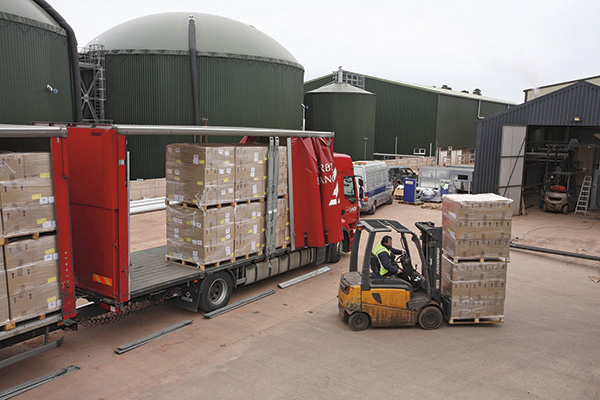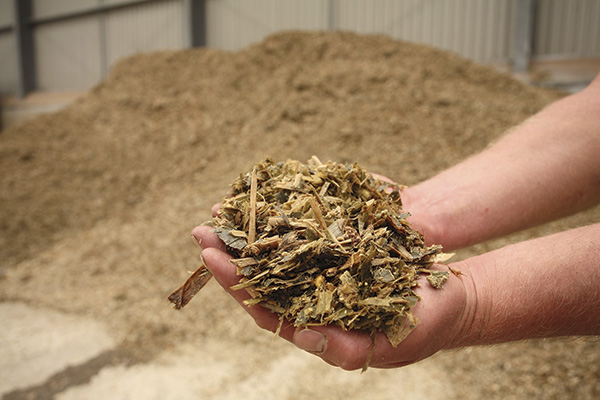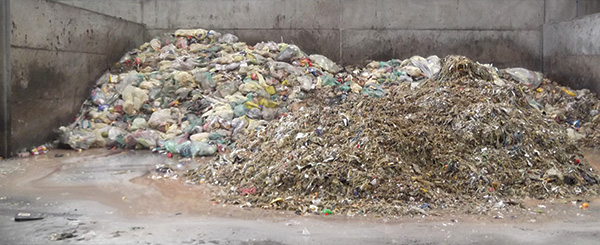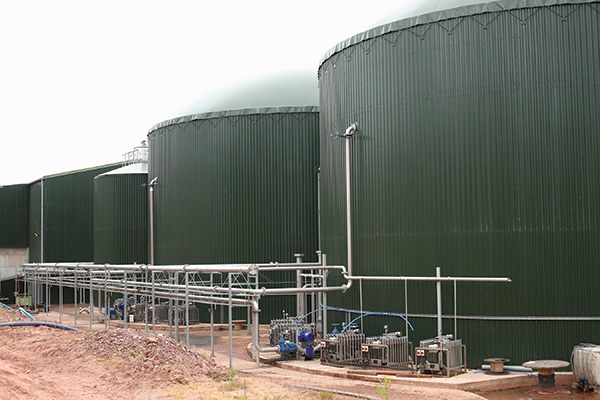As potato and arable crop farmers who diversified into cold storage, bioenergy and recycling, Mike and Tim Roe’s journey into anaerobic digestion shows what can be achieved by operating the ideal pumps and systems that are matched to the application.
Cannington Enterprises
The father and son—based in Bridgwater, Somerset, U.K.—first ventured into cold storage in 1997, growing their business from around 200 pallets of cheese and fruit juice to more than 3,500 pallets stored per week. This success brought about the need to move to a much larger site in 2003. Currently, the company has in excess of 10,000 tonnes of fruit juice and food ingredients stored at -14 C to ambient temperatures. Not surprisingly, these quantities led to much higher energy bills, and they have been rising steadily every year.
“Addressing an annual electricity bill in the region of a quarter of a million pounds became a big priority,” said Tim Roe, managing director at Cannington Enterprises, the parent company of Cannington Cold Stores, Cannington Bio Energy and Cannington Recycling Services.
 Packaged food waste arrives at Cannington.
Packaged food waste arrives at Cannington.“We thought there had to be a way of generating electricity from our farmland. Agricultural commodity prices were very low at the time and wind/solar tariffs weren’t around. Facing an energy gap, we had to do something, so we decided to take charge of our own destiny by building an anaerobic digestion (AD) plant.”
Tim Roe remembers that, with little AD knowledge around in the services industry, planning in 2008 proved fraught to say the least. He said that people tended to form their own uninformed opinions and still do to some extent. When planning was completed, Tim and Mike Roe initially installed two digesters (and a third six months later) in 2009, using corn silage from their farm as feedstock plus some limited liquid waste.
“At first we were producing around 700 kilowatts (kW),” added Tim Roe, “which was certainly encouraging against the 300 kW of power needed at the time to run the site. We designed our process so that it would have the flexibility for different feedstocks, installing a mixer at the front end to keep solids in suspension for the main reception tank, and later installing a submersible chopper pump feeding out of that into a feedstock holding tank. We’ve always been willing to test different pumps, so this specific mixer and submersible chopper pump unit replaced our initial choice (from a different pump manufacturer), which proved ineffective in handling the corn.”
Accelerated Batch Times
Cannington’s AD process was working more than adequately, but in 2011, Tim and Mike Roe decided to change from exclusively corn waste to food waste, which decomposes twice as quickly, to produce the all-important gas much faster. They installed two additional combined heat and power (CHP) engines to boost the AD output to 1.3 megawatts (MW). Currently, the food waste that arrives at Cannington is shredded and de-packaged before liquids are added en route to the reception tank where the mixer first handles the material (17 percent to 20 percent dry matter content).
 Annually, 60,000 tonnes of food waste is first shredded on its way to becoming a renewable energy source.
Annually, 60,000 tonnes of food waste is first shredded on its way to becoming a renewable energy source.Unlike many other biogas operations, a post-pasteurization process is at the end of the system, where organic waste must be heated to 70 degrees for at least one hour. For Cannington’s pasteurizer, a wall-mounted mixer was installed using the existing man-way, which removed the need for any additional refurbishment work. A dry-mounted, high-pressure chopper pump has proven to be a key part of the operation by significantly accelerating batch times.
Tim Roe said, “The first pump we had could manage the 35-meter head required to make the final discharge to our digestate lagoons, but it would take 24 hours and suffer from significant wear and tear. The new dry-mounted, high-pressure chopper pump, which also has to pump 250 meters horizontally and 35 meters vertically, is far more resilient and does the same job in just two and a half hours, which has created major benefits all the way back down the production line.”
Cannington has carried out 99 percent of the AD work itself, making considerable savings and allowing fine tuning to its particular requirements. More than 600,000 tonnes of dirt have been moved to facilitate the AD plant, which is well screened from the road.
From truckloads of bulk material that is obtained from food processors and single wheelie bins from schools, restaurants and pubs, Cannington now processes 60,000 tonnes of food waste annually. The company’s flexibility and willingness to help as a third party disposal/recycling center has created good relationships with an increasingly wide customer base.
 Bagged food waste (left) that will soon resemble the already macerated material on the right.
Bagged food waste (left) that will soon resemble the already macerated material on the right.Income from waste and the AD-generated electricity that is sold onto the U.K.’s National Grid now accounts for about half of Cannington’s income. It generates 2.3 MW, with around 1.35 MW exported to the grid after approximately 700 kW is used to power the site. However, the success does not end there.
“By the end of this year, we will have three more digesters,” added Tim Roe. “These will mainly be for storage to stabilize and strengthen the quality and quantity of our continuous process—and we can also harness more gas from them.”
Digestate from the end of the AD process also presents Cannington Enterprises with opportunities beyond renewable energy generation. With Tim and Mike always looking for improvement, they soon hope to set up an onsite laboratory to further monitor the quality of the final product.
 The number of digesters at Cannington is soon to double from three to six.
The number of digesters at Cannington is soon to double from three to six.Farmers Queuing Up
“We’ve been using the digestate on our farm land to great effect,” said Tim, “but we’re now in a position in which we have farmers queuing up for it because the nutrients in it make such a good organic fertilizer. This is another expanding part of our business and part of the environmental thinking of which we’re proud.”
While Europe has a longer history of AD plants, the U.S. is seeing a growing interest in the AD technology and the potential for renewable energy production from organic waste. Several U.S. end users have installed pumps and mixers for handling slurries and feedstocks at AD plants, with several more plants projected.


